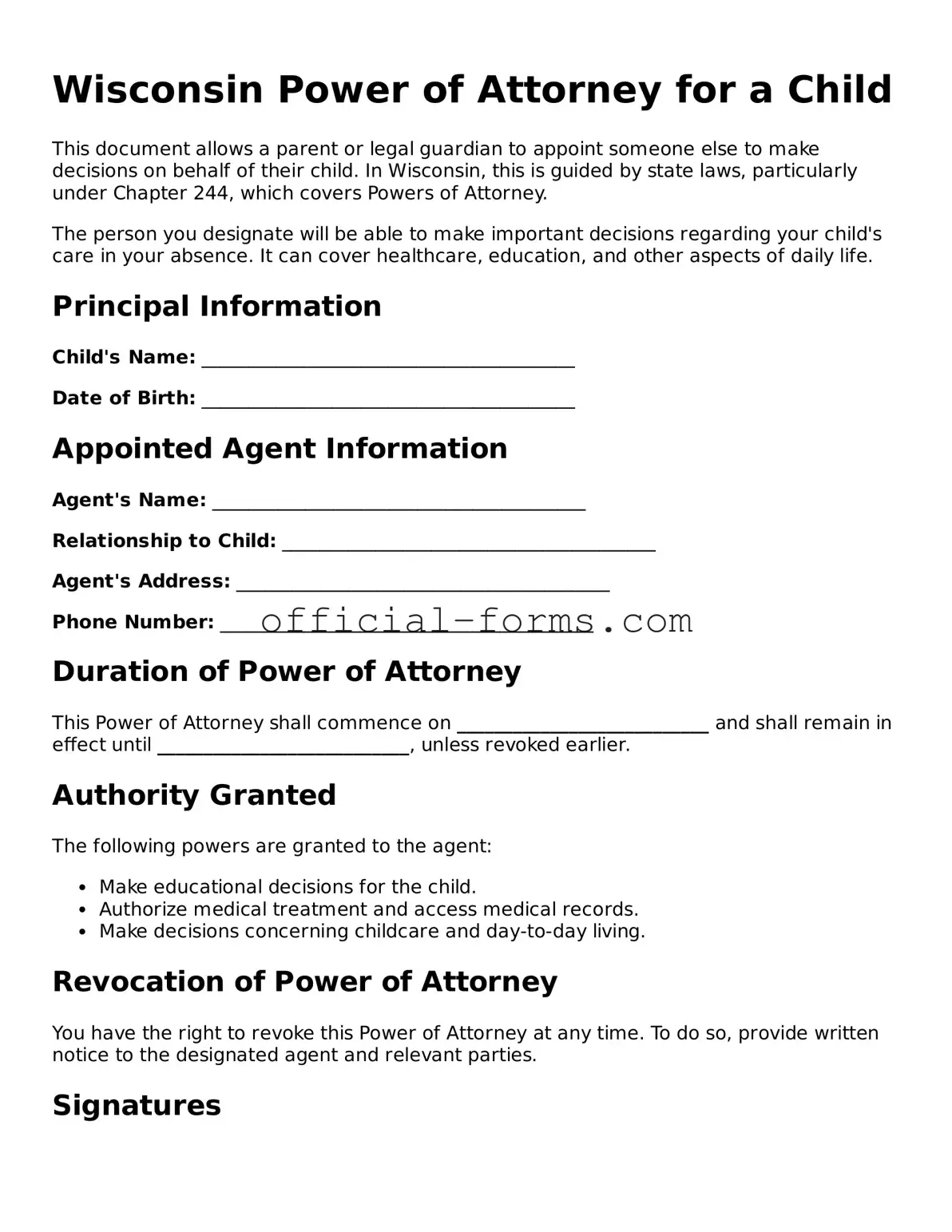Official Wisconsin Power of Attorney for a Child Document
The Wisconsin Power of Attorney for a Child form is a legal document that allows a parent or guardian to appoint another individual to make decisions on behalf of their child. This form can be particularly useful in situations where the parent is unable to be present, ensuring that the child's needs are met in their absence. Understanding the importance of this document can help parents navigate challenging circumstances with greater peace of mind.
Open My Power of Attorney for a Child Now
